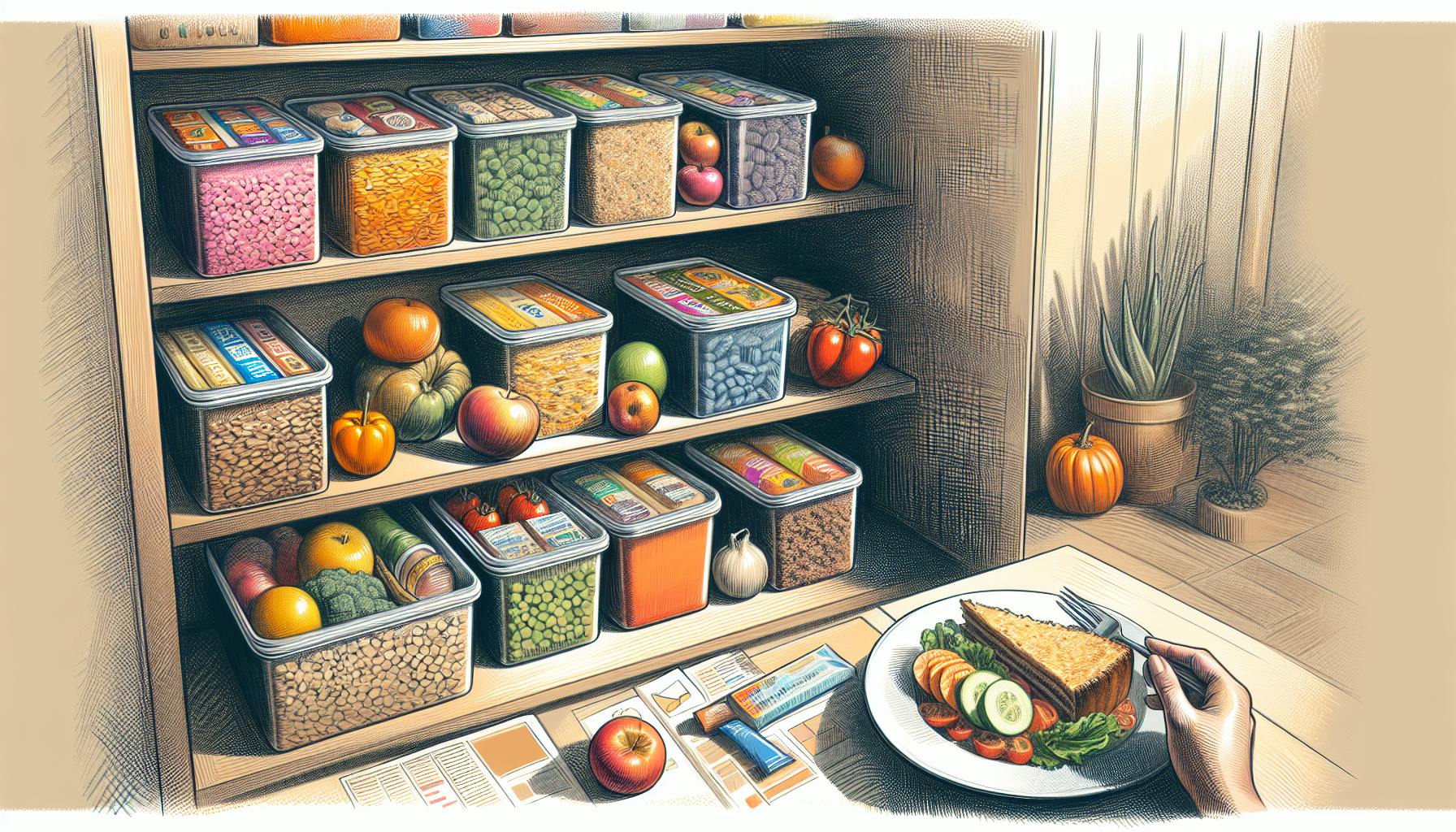Introduction to LDS Food Storage
The Church of Jesus Christ of Latter-day Saints has long taught principles of self-reliance and emergency preparedness to its members. Food storage is considered a critical component in being able to weather personal emergencies or large-scale disasters. The lds survival food list emphasizes shelf-stable foods that provide essential calories and nutrients during times of crisis.
LDS food storage guidelines recommend keeping at least a three-month supply, with a one-year supply being optimal. This enables families to be self-reliant in difficult times without being a burden on others. Careful planning ensures the food storage has sufficient calories and variety for short-term and long-term needs. Building up food reserves is meant to be done gradually over time.
Proper storage with oxygen absorbers, Mylar bags, and food-grade buckets helps maximize shelf life. Oxygen absorbers remove oxygen from storage containers to prevent food spoilage. Mylar bags create an airtight barrier to protect food. Sturdy buckets keep out pests, light, and moisture. Regularly rotating and replenishing food items is key to avoiding waste and keeping supplies fresh. An lds survival food list works hand in hand with developing practical skills and community connections that enhance preparedness.
Recommended Foods for LDS Food Storage
When building an LDS food supply, focus on shelf-stable basics that provide sustenance and nutrition. Recommended foods include:
- Whole grains - Hard white or red wheat (25-50 lbs per person annually), rice (20-25 lbs per person annually), oats, cornmeal, pasta (10-15 lbs per person annually), flour
- Legumes - Beans, peas, lentils (60 lbs per person annually)
- Fats/oils - Vegetable oil, coconut oil, olive oil (8-12 quarts per person annually)
- Sweeteners - Honey (7 lbs per person annually), white/brown sugar (60 lbs per person annually), maple syrup
- Dairy - Powdered milk, evaporated milk, shelf-stable milk (10 cans evaporated milk and 2-4 lbs powdered milk per person monthly)
- Freeze-dried produce - Fruits, vegetables, mushrooms (100-300 servings per person annually)
- Canned proteins/produce - Meats, soups, fruits and vegetables (50-100 cans per person annually)
- Snack foods - Nuts, dried fruit, granola bars, crackers
- Flavorings - Salt, spices, yeast, baking powder
These foods store well and can be incorporated into familiar meals like bean burritos, rice casseroles, and pancakes. Augment them with a garden, sprouting seeds, hunting/fishing, and foraging knowledge. Think nutrient-dense foods with versatility.
Key Principles for Building an LDS Food Supply
Follow these guidelines when stocking an LDS food supply:
- Focus on staple, nutritious foods your family regularly eats
- Buy shelf-stable items in bulk and use a first in, first out system
- Store at least a 3-month supply, ideally a 1-year supply
- Store food properly in cool, dry, and dark conditions
- Use oxygen absorbers and food-grade storage containers
- Rotate through food using oldest items first
- Replace food before expiration dates
- Accommodate special diets and food allergies
- Gradually build up reserves over time
- Keep an inventory of food items and expiration dates
- Learn recipes and cooking methods that utilize storage ingredients
By systematically building and managing an LDS food supply, you can ensure your family has essentials on hand when they are most needed.
Quantities for LDS Food Storage
When calculating LDS food storage needs, plan for both short-term emergencies and long-term survival. Base quantities on daily calorie requirements and family size projections.
For short-term situations of 2 weeks to 3 months, store familiar foods providing 1,800 calories per person per day. For long-term scenarios of 1-5+ years, aim for at least 2,000 calories per person daily, with higher activity levels requiring more calories.
Use the table below for sample food storage quantities tailored to family size. Adjust as needed based on each family member's age, gender, and activity level. Build in extra capacity for pregnant or nursing mothers, babies and children, and any expected changes in family size. Stocking up incrementally over time can make the process more manageable.
Family of 3 (2 adults, 1 child) - 1 month supply
- Hard white wheat: 50 lbs
- Rice: 25 lbs
- Beans: 30 lbs
- Vegetable oil: 3 quarts
- Sugar: 30 lbs
- Powdered milk: 6 lbs
- Canned goods: 30 cans
- Freeze dried fruit: 30 servings
Family of 5 (2 adults, 3 kids) - 3 month supply
- Hard red wheat: 300 lbs
- Oats: 50 lbs
- Lentils: 90 lbs
- Olive oil: 6 quarts
- Honey: 7 lbs
- Shelf-stable milk: 15 cans
- Canned vegetables: 90 cans
- Dried mushrooms: 90 servings
Family of 7 (2 adults, 5 kids) - 1 year supply
- Wheat: 600 lbs
- Rice: 350 lbs
- Cornmeal: 100 lbs
- Vegetable oil: 24 quarts
- Sugar: 100 lbs
- Powdered milk: 48 lbs
- Canned fish: 200 cans
- Freeze dried meals: 700 servings
Short-Term LDS Food Supply Recommendations
- 2 weeks to 1 month supply: 1,800 calories per person daily
- 3 month supply (minimum): 1,800 calories per person daily
- 6 month supply: 1,800 calories per person daily
- 1 year supply: 1,800 calories per person daily
- Grab-and-go supply: 1,800 calories per person daily
Long-Term LDS Food Supply Recommendations
- 1 year supply: 2,000-2,500 calories per person daily
- 2 year supply: 2,000-2,500 calories per person daily
- 3 year supply: 2,000-2,500 calories per person daily
- 5 year supply: 1,800-2,000 calories per person daily
Base food quantities on both family size and individual calorie needs. Having reserves to cover different time frames provides preparedness and peace of mind.
Storing Your LDS Food Supply
Proper storage is key to maximizing shelf life and preventing waste. Use food-grade plastic buckets, Mylar bags, and oxygen absorbers to keep food dry, cool, and protected from light and pests. Store items in a clean, uncluttered area on shelves to optimize space. Check containers periodically for any signs of insects or rodents. Consider the temperature and humidity needs of different foods - some do better at cooler temps.
Group like foods together and label containers clearly. Arrange food so oldest is used first. Have a separate easily accessible area for regular use items. Maintain an updated written or digital inventory.
Recommended Storage Containers
- Food-grade plastic buckets with gasket lids
- Mylar bags with oxygen absorbers
- Vacuum sealed bags and canning jars
- Plastic bins or totes with lids
- Coolers for bulk items like grains
Tips for Organizing Your Food Storage
- Sort foods into logical groups
- Label everything clearly with contents and date
- Use shelving to maximize storage space
- Rotate stock using oldest first
- Have a daily use area separate from reserves
- Keep an inventory list nearby
Following proper storage protocols helps ensure no food goes to waste and that it will be there when needed most.
Supplementing Your LDS Food Supply
While core staples are the basis of an LDS food supply, you can expand preparedness by supplementing in key areas:
- Take vitamins to fill nutritional gaps
- Sprout seeds and grow a garden to add fresh produce
- Hunt, fish, or forage for additional food sources
- Stock herbs, spices, and barter items
- Learn skills like canning, food dehydration, and cooking with storage
Vitamins and Supplements
- Multivitamins
- Vitamin C
- Calcium
- Iron
- Potassium
Foraging Items
- Fishing line and hooks
- Snares and traps
- Identification books
- Canning jars and supplies
- Fermentation tools
Sprouting seeds provides fresh greens and vegetables. Canning and dehydrating food preserves seasonal abundance. Foraging offers alternate protein sources. Skill development enhances utilization of storage foods. A multifaceted food strategy provides flexibility and balances out any limitations of the core food supply.
Budgeting for Food Storage
The cost of building up a long-term food supply can seem daunting. However, following a few budget-friendly tips can make the process manageable:
- Purchase bulk items on sale and when you have extra funds
- Focus on basics like rice, beans, and canned goods first
- Buy a few extra food staples each grocery trip
- Gradually replace old food storage items
- Save up over time to buy pricier freeze-dried foods
- Consider growing your own produce to supplement
- Split bulk purchases with other families
Conclusion
Creating an LDS food supply covers basic calorie and nutritional needs for personal emergencies or disasters. Shelf-stable staples store well, while vitamins, sprouting, and alternative food sources create a well-rounded plan. Rotate and replenish food routinely. Proper organization and storage extends shelf life. An lds survival food list enables families to be self-reliant and prepared.


